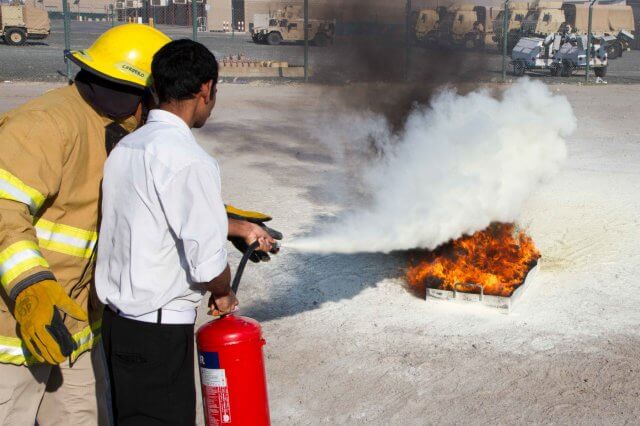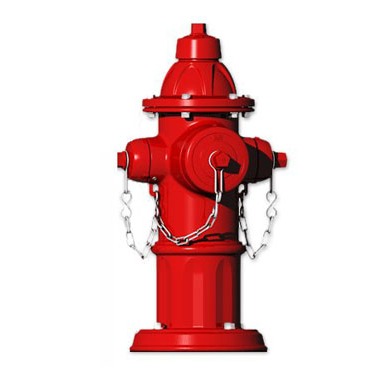“A spark can set a whole forest on fire. Just a spark. Save it.” – Quoted sensibly by Charles Bukowski, German-American poet, novelist, and short story writer. With this he signifies how important it is to take care of the small things and how often things that get destroyed are by small things and not big.
Now, can you imagine a small spark by someone’s mistake and the entire forest is destroyed? In the same way a small mistake by an individual can destroy the entire commercial space in no time. The fire catches faster than we can imagine in commercial space due to the excess amount of vehicles parked in the parking lot full of fuel, heavy machinery, technical equipment and wires, smoking zones and many more reasons.
In case, your commercial building catches fire, then these emergency measures are important to take till the fire safety help arrives:
Fire safety plan for commercial space
 Installation of fire extinguishers
Installation of fire extinguishers Fire prevention guide by fire safety experts in the employ joining kit
Fire prevention guide by fire safety experts in the employ joining kit Fire prevention guide by doctors in the employ joining kit
Fire prevention guide by doctors in the employ joining kit Understanding the use of fire safety equipments by all members
Understanding the use of fire safety equipments by all members Emergency response plan at every floor
Emergency response plan at every floor List of helpers with contact details on each member’s desk
List of helpers with contact details on each member’s desk Daily checking of condition of fire alarm
Daily checking of condition of fire alarm Do not try spilling water from the plastic bottle, it catches fire faster. Just try to leave the place.
Do not try spilling water from the plastic bottle, it catches fire faster. Just try to leave the place. Do not try to prevent the fire by yourself. You might end up injuring other people due to lack of proper knowledge and expertise.
Do not try to prevent the fire by yourself. You might end up injuring other people due to lack of proper knowledge and expertise.
Above all, we would recommend all the commercial space owners to conduct a fire safety training session for the employees to prevent them from severe injuries in case of fire. The training session is basic and does not involve much cost, therefore, considering it as an investment would be a good decision.
We, at Australian Fire Protection, provide services related to Warden training, Fire safety training, Fire hose reel services, Emergency response training, Emergency response plan, Thermal imaging services, Fire prediction training etc. To know more about fire safety, visit https://www.
MORE POST IN SAME CATEGORY
 Exit & Emergency Lights Suppliers and Installers
Exit & Emergency Lights Suppliers and Installers What emergency measures to take in case of fire at the commercial premises
What emergency measures to take in case of fire at the commercial premises Why is it Important to Have Passive Fire Protection System in Every Australian Building?
Why is it Important to Have Passive Fire Protection System in Every Australian Building? Know More About The Different Types of Fire Sprinkler Systems
Know More About The Different Types of Fire Sprinkler Systems 5 Alarming Reasons for the Start of a Bushfire
5 Alarming Reasons for the Start of a Bushfire Why Is Fire Extinguisher Training Really Important?
Why Is Fire Extinguisher Training Really Important?






